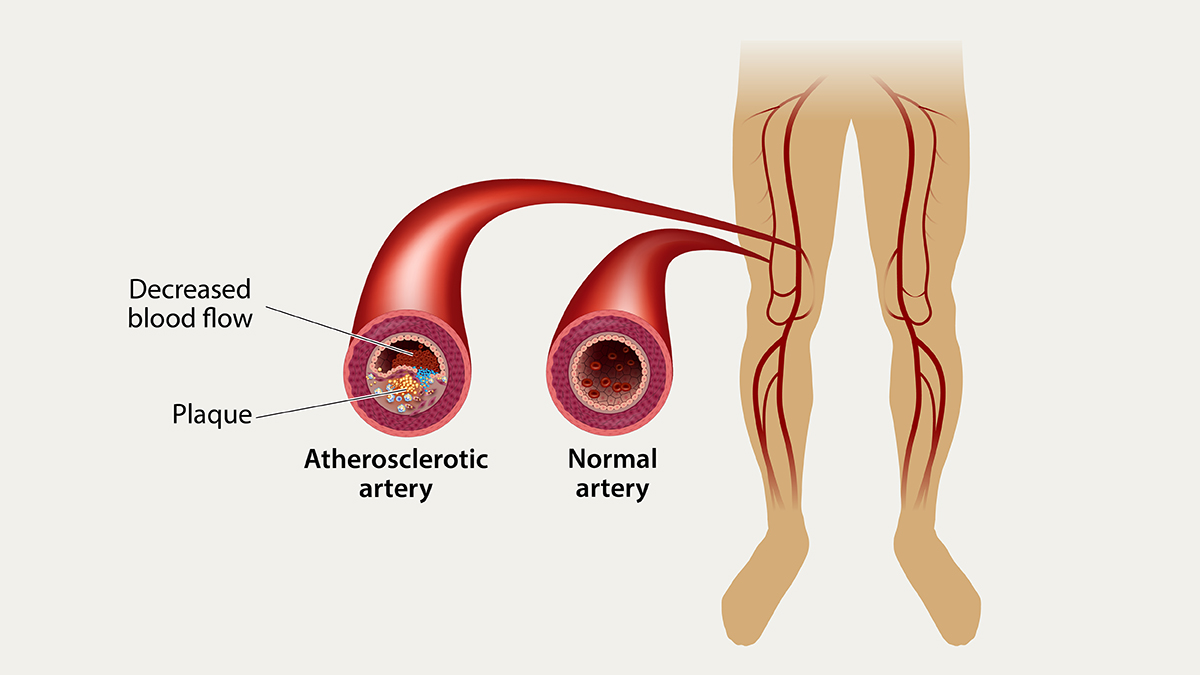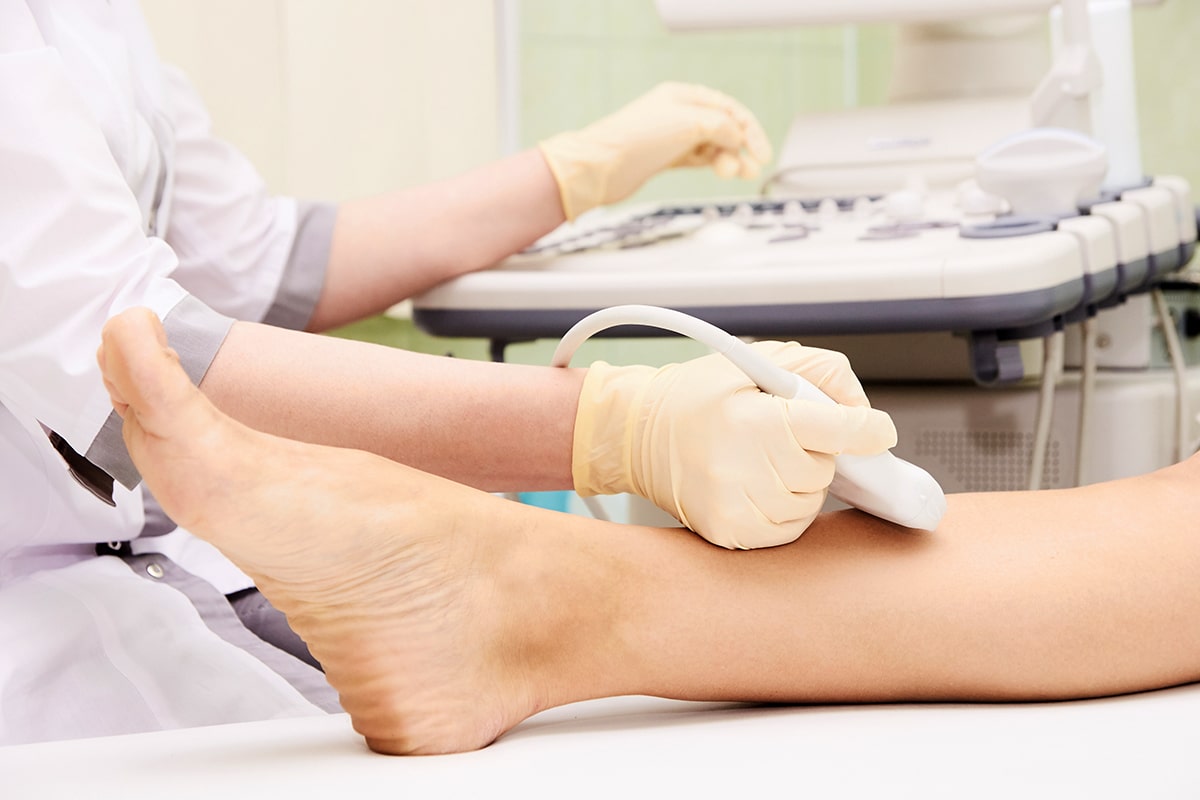Peripheral Arterial Disease
What it is
Peripheral arterial disease (PAD) in the legs or lower extremities is the narrowing or blockage of the vessels that carry blood from the heart to the legs. It is primarily caused by the buildup of fatty plaque in the arteries. This is called atherosclerosis. PAD can happen in any blood vessel, but it is more common in the legs than the arms.

Signs and symptoms
The classic symptom of PAD is pain in the legs with physical activity, such as walking, that gets better after rest. However, up to 4 in 10 people with PAD have no leg pain. Symptoms of pain, aches, or cramps with walking (claudication) can happen in the buttock, hip, thigh, or calf.
Physical signs in the leg that may indicate PAD include:
- Muscle atrophy (weakness).
- Hair loss.
- Smooth, shiny skin.
- Skin that is cool to the touch, especially if there is pain while walking (that is relieved by stopping walking).
- Decreased or absent pulses in the feet.
- Sores or ulcers in the legs or feet that don’t heal.
- Cold or numb toes.
Risk factors
- Smoking
- High blood pressure
- Atherosclerosis
- Diabetes
- High cholesterol
- Age above 60 years
Both men and woman are affected by PAD; however, African Americans people have an increased risk of PAD. Hispanic people may have similar to slightly higher rates of PAD compared with non-Hispanic White people. Approximately 6.5 million people age 40 and older in the United States have PAD.
Other health conditions and disorders of arteries can mimic the symptoms of PAD, and not all PAD is due to atherosclerosis.
If you have PAD, you are at risk for developing coronary artery disease and cerebrovascular disease, which could lead to a heart attack or stroke.
Prevention
Get plenty of physical activity to help prevent PAD or improve symptoms of PAD.
Do not use tobacco. Smoking increases the risk of PAD and makes PAD symptoms worse.
Control high blood pressure and manage high blood cholesterol and diabetes.
If you have PAD, participating in supervised exercise training programs can improve and prolong your ability to walk longer distances.
Source: www.CDC.gov


